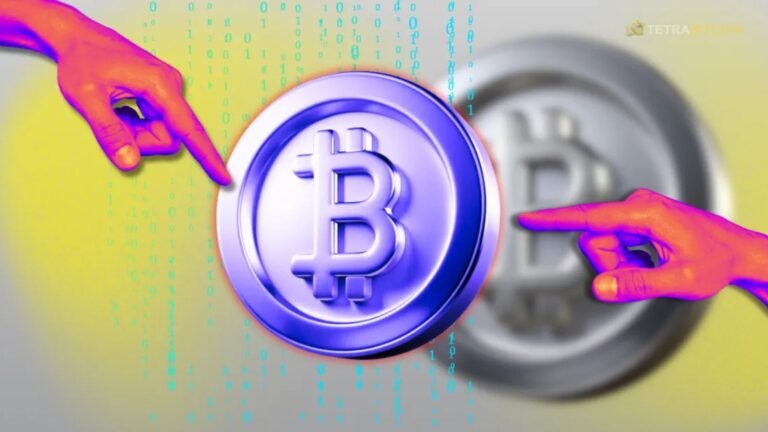The price of Bitcoin, the most widely used cryptocurrency, has fluctuated wildly over the past few months. Institutional and ordinary investors are showing a growing interest in the digital currency, formerly seen as a speculative asset. Can the recent price increase in Bitcoin be maintained? This is a question that many in the cryptocurrency community have been asking. This essay will explore what is causing Bitcoin Price Surge in value, what obstacles it may encounter, and whether or not this trend can be sustained over the long run.
The Recent Bitcoin Price Surge
Since hitting a peak in late 2017, the price of Bitcoin has risen dramatically in recent months, reaching levels not seen since then. Bitcoin has recently surpassed $50,000 in value, garnering much attention from the media and the general public. This increase has occurred after a time of reduced pricing and more stability, especially following the devastating fall in 2022. From different corners of the financial world, voices of optimism and pessimism have emerged over the durability of such a massive surge.
Factors Driving Bitcoin’s Surge
The current spike in Bitcoin’s price is due to several important causes. If we want to know if this momentum can be maintained, we need to know these things.
Institutional Adoption
The growing number of large financial institutions buying Bitcoin is a significant reason for its meteoric rise in value. Notable public firms, hedge funds, and financial institutions have all added Bitcoin to their holdings in the cryptocurrency within the last 12 months. The fact that prominent companies like Square, Tesla, and MicroStrategy have all backed Bitcoin has bolstered its credibility as an investment option. Bitcoin ETFs (Exchange-Traded Funds) have also just been approved, which has allowed institutional investors to acquire exposure to the asset without actually buying Bitcoin.
Inflation Hedge and Global Economic Uncertainty
Concern over inflation and economic instability has increased, which has helped propel Bitcoin’s price. Investors are seeking new ways to store capital due to stimulus programs run by central banks worldwide, especially in the United States. With its 21 million coins in circulation, many see Bitcoin as a gold-like asset that may protect investors from inflation. More and more people are looking to Bitcoin to hedge their bets against potential inflation.
Improved Regulatory Clarity
Additionally, investor worries have been alleviated by Bitcoin’s more evident regulatory landscape. There have been indications of more precise rules for investing in and trading cryptocurrencies in nations such as the US. Bitcoin and other cryptocurrencies may get more institutional support and widespread adoption if the U.S. Securities and Exchange Commission (SEC) decides to regulate them. Positive regulatory developments in different nations have boosted market confidence in cryptocurrencies, such as El Salvador’s decision to accept Bitcoin as legal cash.
Increased Media and Public Awareness
The public’s understanding of cryptocurrencies has grown due to media attention and the proliferation of platforms facilitating investments in these assets. More and more people are learning about Bitcoin and its possible use as a form of investment. Because of this, there has been a surge in retail investors, especially those from younger generations who feel more at ease dealing with digital assets.
Challenges to Sustaining the Bitcoin Surge
Although the elements above have had a role in Bitcoin’s remarkable price increase, several obstacles might prevent its further development and price sustainability.
Volatility and Speculation
While Bitcoin’s price has risen in recent years, it is just as likely to experience steep drops. Price fluctuations in cryptocurrencies are frequently influenced by news, social media trends, and market mood rather than underlying fundamental issues. The sector is still in its early stages and largely speculative. It is difficult to forecast if the current price spike will be sustained or if a significant correction will ensue due to high volatility.
Regulatory Challenges
Bitcoin has considerable regulatory obstacles in some nations, even though regulatory clarity has improved in others. Its value may take a hit if laws were to tighten up, particularly in significant economies like China and the United States. For example, Bitcoin’s value has historically been impacted by China’s prohibition on cryptocurrency mining and trade. Investor trust might be eroded, and the price spike could be reversed. If governments take measures to limit Bitcoin’s use or impose more controls.
Environmental Concerns
The energy-intensive process of confirming transactions on the network is a significant reason Bitcoin mining has come under fire for its environmental impact. A closer look at Bitcoin’s ecological effect may be warranted as worries about global warming and sustainability intensify. This may cause a change in public opinion against the cryptocurrency or increase regulatory actions. Which could slow its adoption and price growth.
Market Saturation and Competition
The possibility of market saturation is another consideration. Despite its dominance, Bitcoin isn’t immune to competition from other cryptocurrencies and blockchain initiatives. Emerging as Bitcoin alternatives, cryptocurrencies such as Solana, Cardano, and Ethereum provide lower costs and quicker transaction times. The market share and price of Bitcoin could fall if these rival cryptocurrencies become more widely used.
Can Bitcoin’s Price Surge Be Sustained?
There are many moving parts in determining whether Bitcoin’s recent price spike will be sustained. Several positive aspects contribute to Bitcoin’s price, such as its increasing institutional use, function as a hedge against inflation, and improved regulatory clarity. On the other hand, Bitcoin has many problems, including its unpredictable value, problems with regulations, and environmental issues.
There will probably be further price swings for Bitcoin shortly. Government laws and macroeconomic conditions are external elements that will significantly influence the market’s future. But if Bitcoin can win over more institutions, increase its acceptance as a store of value, and resolve its environmental concerns. It might keep growing as an asset class in the long run.
Conclusion
Many people are excited about Bitcoin’s recent increase, but it’s far from certain that it will be able to keep going up. Bitcoin confronts several threats that can hinder its future development, and the whole cryptocurrency industry is volatile. The public’s increasing familiarity with Bitcoin and its potential uses. The growing interest from institutions also raises concerns that the price spike could be more than just a fad. Cryptocurrencies are constantly changing, so investors should proceed cautiously and keep themselves educated about the potential risks and prospects.
[sp_easyaccordion id=”3050″]

